Côteaux Varois en Provence 2013
2013 marked the 20th anniversary of the creation of the appellation of Côteaux Varois on 24 March 1993. Twenty years ago many producers were disillusioned by the difficulties in selling their wine with a mere VDQS status, and many were grubbing up their vineyards. The creation of the appellation validated their place in the ranks of Provençal wines of quality. Over the past twenty years, the wines from this northerly Provençal appellation have forged a distinctive character reflecting the cooler climate. Fresh fruit, acidity and elegance mark the better wines. The red wines are generally dominated by Syrah.
The unseasonally cold and wet weather meant that, unfortunately, the tasting was held under a large white marquee, so the beautiful cloisters of La Celle were not visible during the tasting.
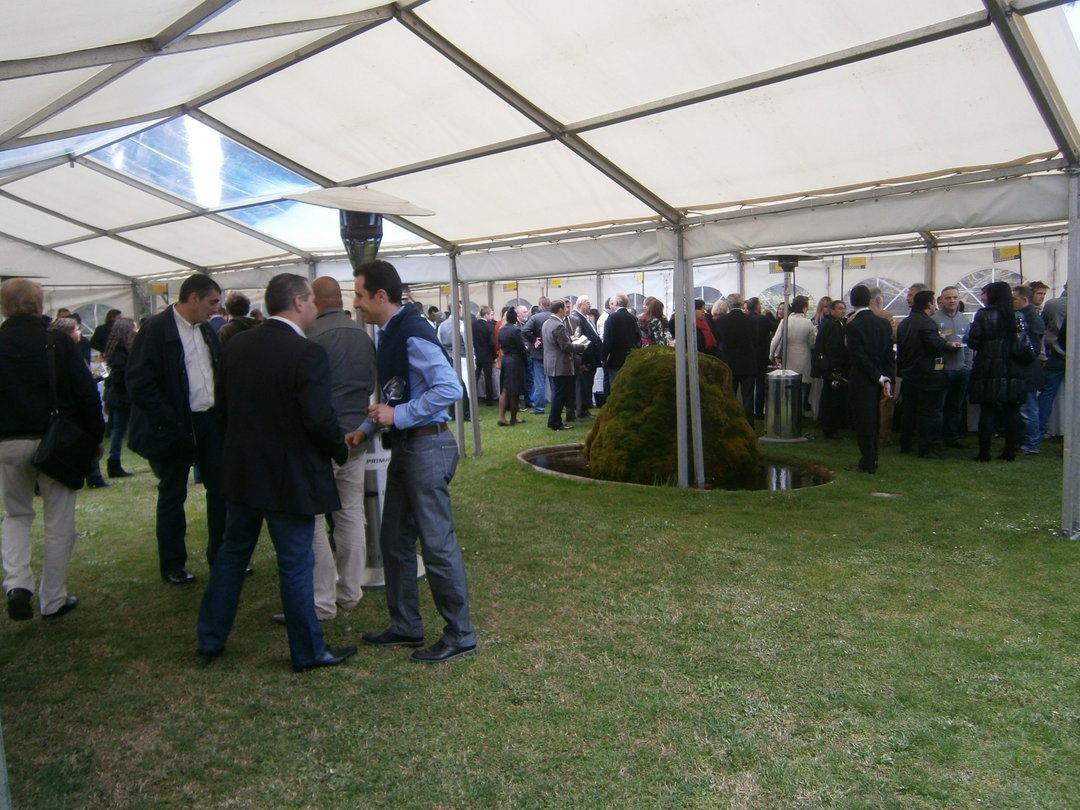
Under the marquee
This made it more pleasant to taste professionally - not too hot nor too cold - but meant that it felt more like an English summer fête than a Provençal garden - there is something very distinctive in the atmosphere of damp grass and crowds under plastic canvas.
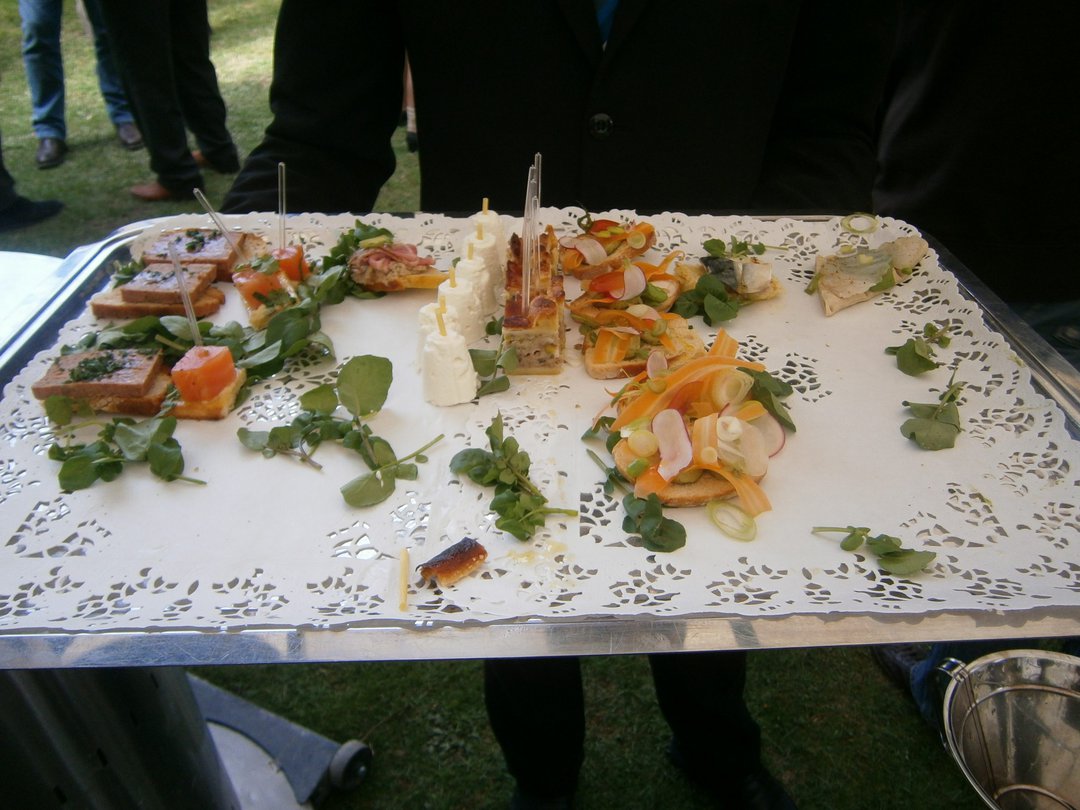
Canapés served up by the Alain Ducasse restaurant
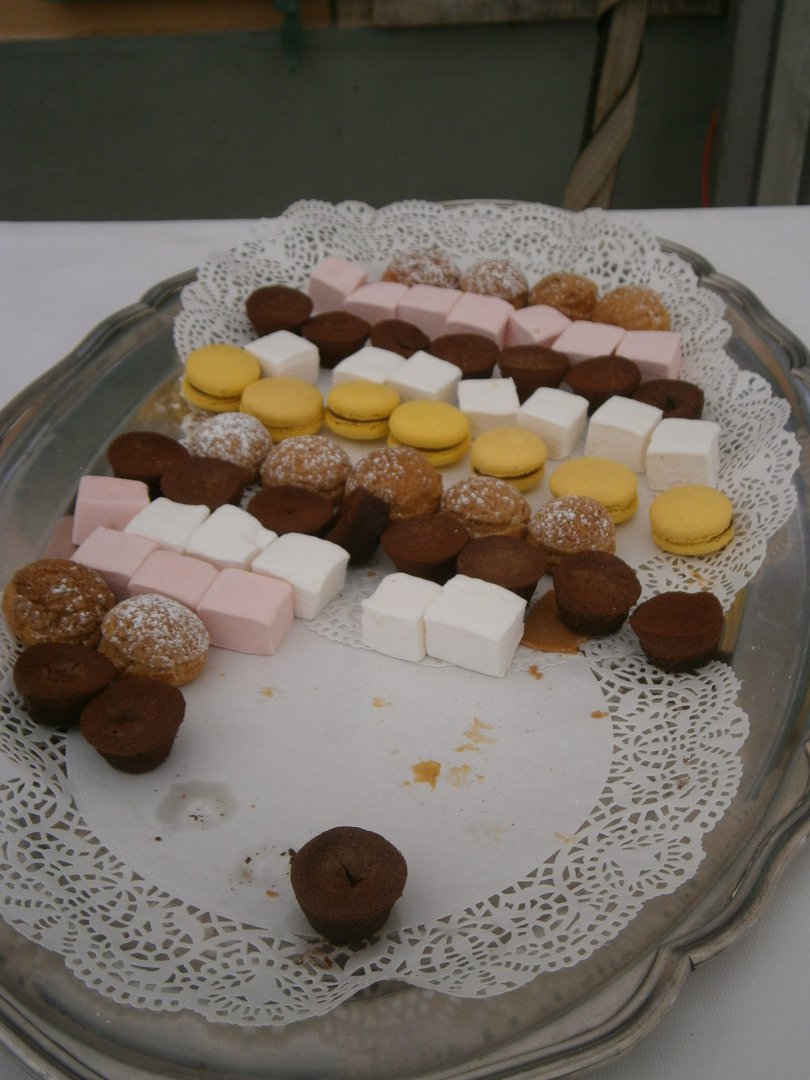
One of the dessert platters
As usual, the atmosphere at the Côteaux Varois tasting makes it one of the more pleasant and friendly tastings. The relatively small number of producers (43) exhibiting meant that tasters were not overwhelmed by an impossible number of stands to visit, and even if not all wines were tasted, it was possible to talk to many people.
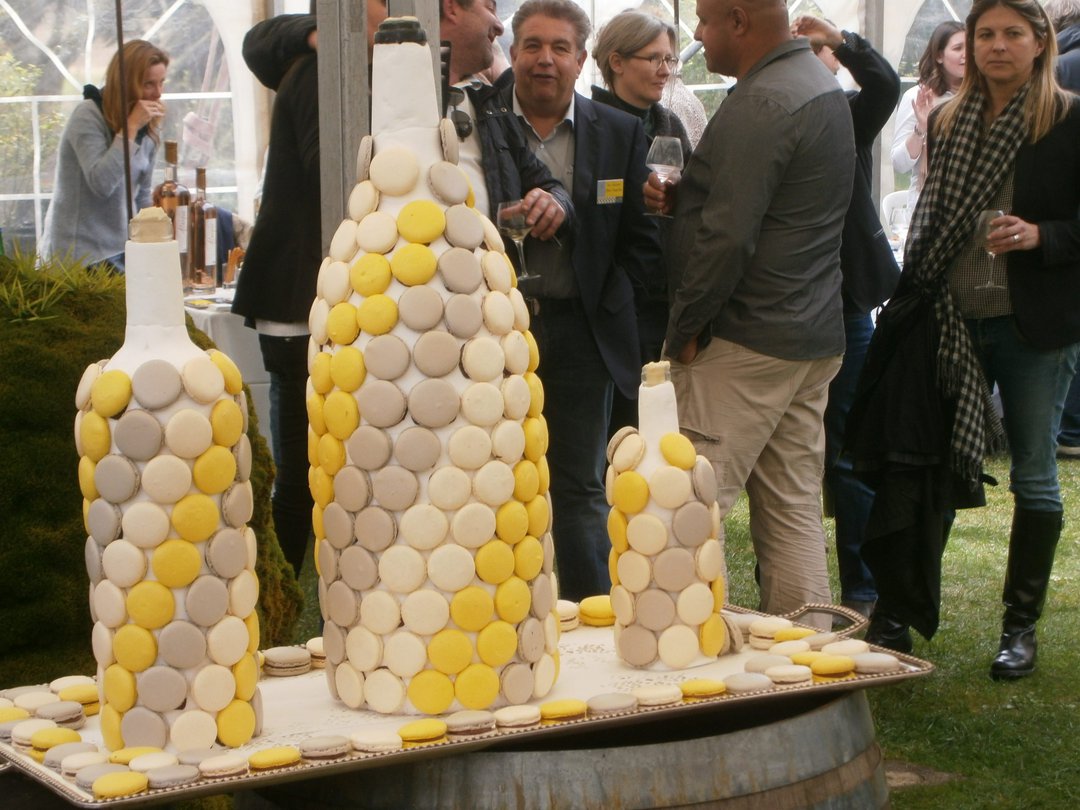
The 20th Anniversary cake
The 2012 Vintage
The winter of 2011-12 was cold, the spring wet - restoring the water table. By the end of May, the temperatures began to climb and June and July were very hot and dry, finishing with a small heatwave during the first two weeks of August. Luckily there was some rain during the latter half of August and September, boosting the growth of the grapes before harvest. On average, the grapes were harvested ripe but with alcohol levels a degree lower than 2011, and the wines were marked by a freshness and balance.
The Rosés
A range of sparkling rosés, made primarily with a blend of Grenache and Cinsault, with one or two with the addition of a small amount of Mourvedre displayed a large range of pink hues.
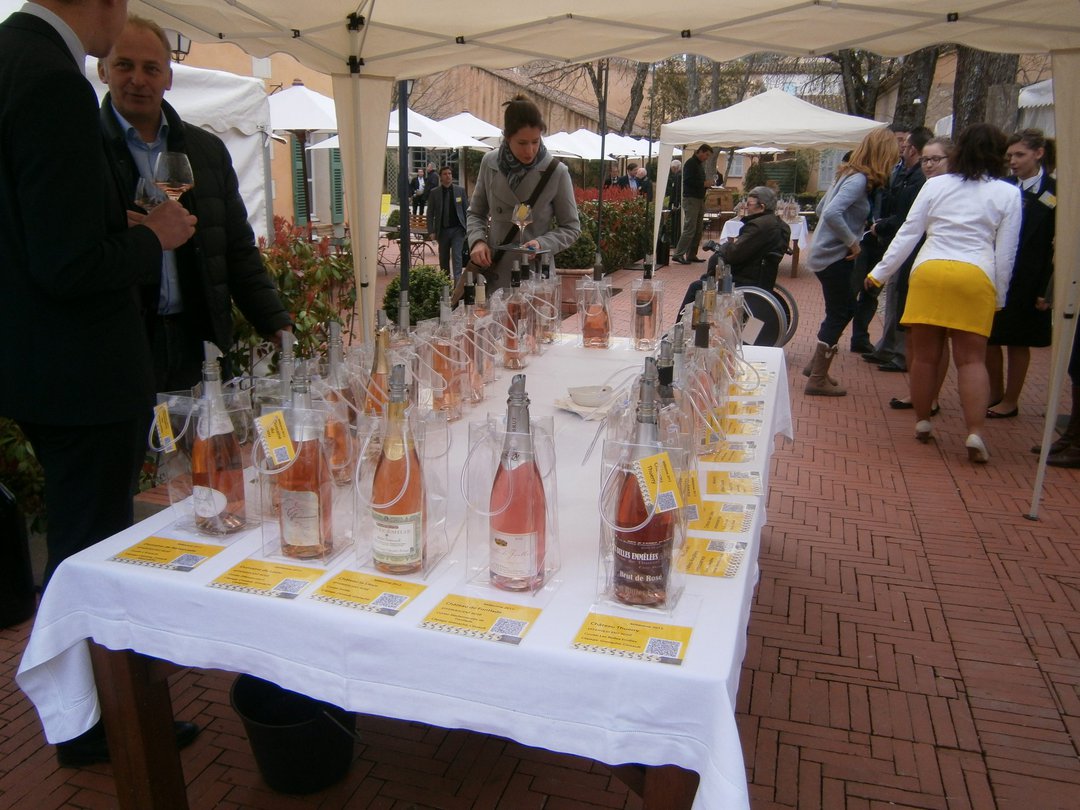
The Rosé Table The Thuerry 'Emmeles' almost pale red pink and the Fontlade a pale rose pink. The rest were more salmon pink in colour. As with still rosé wines, the market prefers very pale pink and Thierry from Valbonne felt the darker the sparkler the less likely they were to sell. Price wise they are also difficult to sell. A good Provençal sparkling wine will be on sale for around 10-15 euros plus - and when you can buy a champagne for around the same price in a supermarket, this is difficult competition. The majority of the sparklers were rosé wines with bubbles - Louue or Domaine du Lieue's 'Emilie' had a vast quantity of very large bubbles which was remarked on by a number of people. Margillliere had a shorter finish. Domaine de l'Escarelle had a pronounced burnt toasty aroma - a little too burnt and possibly a whiff of rubber, but a good autolysis character on the palate making it more champagne like. Fontlade's 'Mademoiselle de Fontlade' was aromatic, floral and a delightful summery pink sparkler - not a table wine with bubbles. None of the rosés really struck me as being very noticeable. Interestingly enough, despite the heavy push by the powers that be, many producers seemed to feel they were being pushed into rosé production by the commercial market. Buyers will piggy-back the red and white wines on a big order of rosé wine. Even better if the bulk of the order is a cheap sparkling with a smaller amount of more expensive rosé. Although the healthy rosé sales are keeping many producers financially solvent, I fear this may be at the destruction of the long term quality of the region, especially at the expense of some superb red wines.
The Whites
Of the white wines, the 2012 seemed to show a more lean and minerally character than in previous years. Good acidity and freshness made the wines elegant but they lacked the roundness and richness more usually associated with white wines from this region. It will be interesting to see how these wines age. Duvivier's L'Amandier had less almond aroma than in the 2011 and more crisp apple, mineral and savoury nut character. Domaine de Fontlade lost nearly all of their white production during the heavy hail storm in May. Chateau Miraval's only Côteaux Varois wine is their white Clara Lua. The 2012 was good but not outstanding. What was very interesting is that the rather bored woman on the stand (presumably because they were fielding celebrity questions all day) then offered a Clara Lua 1996 to taste. Deep gold in colour, oxidised fruit but with still extremely good fresh acidity. I asked why they were showing this older vintage - a little surprised by the answer - because we have a lot in stock... Not very commercially attractive but I rather liked the quirky old Rioja style and think if the sommelier or caviste had the confidence and knew their clients, it could still sell. I think this was the white wine which stood out most for me.
The Reds
Of the reds, a few producers were making a concerted effort to concentrate on their red wine production. Interestingly, the red wines I was most impressed with, had high percentages of Syrah.
Chateau la Curniere is newly owned (I think since 2009?) by a young couple from the Rhone. Their reds (the cuvée Chateau made with Syrah, Grenache and Cabernet Sauvignon and their Montagne 3 Croix made with Cabernet Sauvignon and Syrah) both had lovely Syrah fruit, great depth and structure.
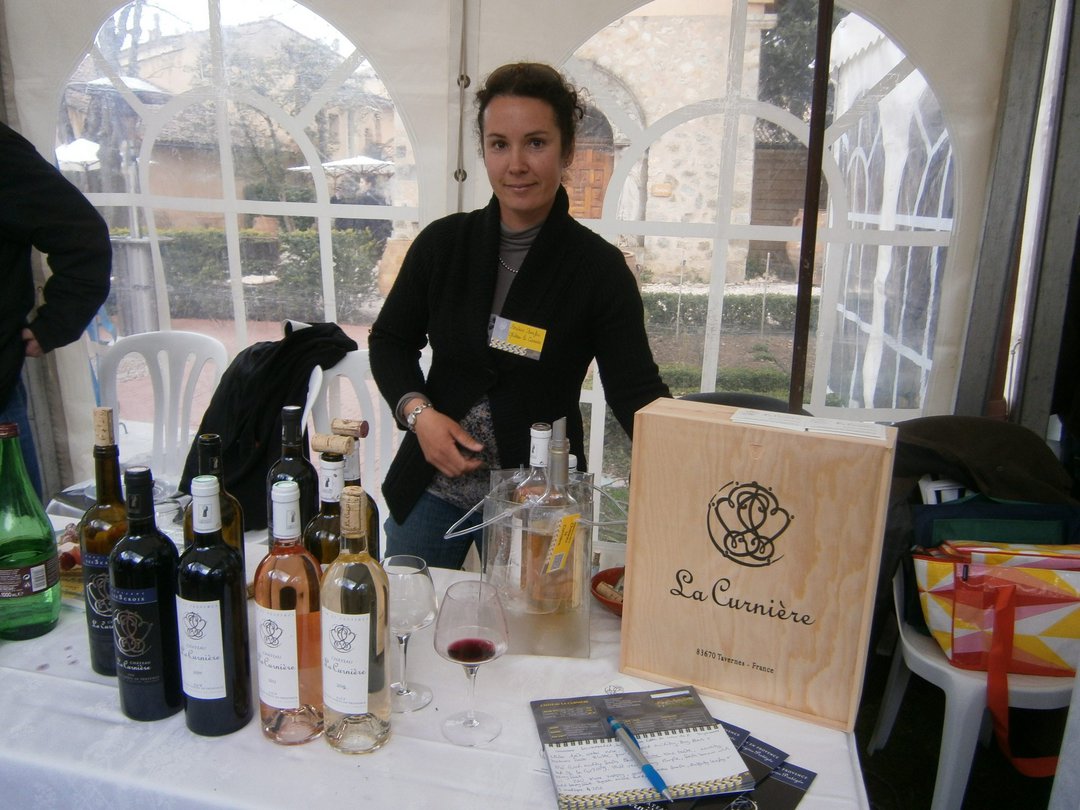
Chateau la Curniere
Domaine du Deffends makes no white wine, some rosé and produces largely red wine. The 2011 Champs de la Truffiere (Syrah and Cabernet Sauvignon) was rich and full of black fruit while the 2012 was showing a much lighter, more lean and mineral style. Their Marie Liesse (Grenache, Syrah) and Champs du Bécassier (Syrah Cabernet Sauvignon) were also very good.
Chateau La Martine's red 2010 (Syrah, Cabernet Sauvignon and Grenache) was also excellent. Interestingly enough I had a long conversation with the owner about the decline in red wine production and increase in rosé production. Despite her good red and preference for red wine, she produced a large amount of rosé. Apparently even in Bandol the amount of rosé being produced is increasing at the expense of red - a very worrying trend.

Aurore Jaubert-Bertrand, Chateau la Martine Other reds tasted which I liked were: Bastide des Oliviers, Duvivier, Fontlade, Margui and St Jean de Villecroze.